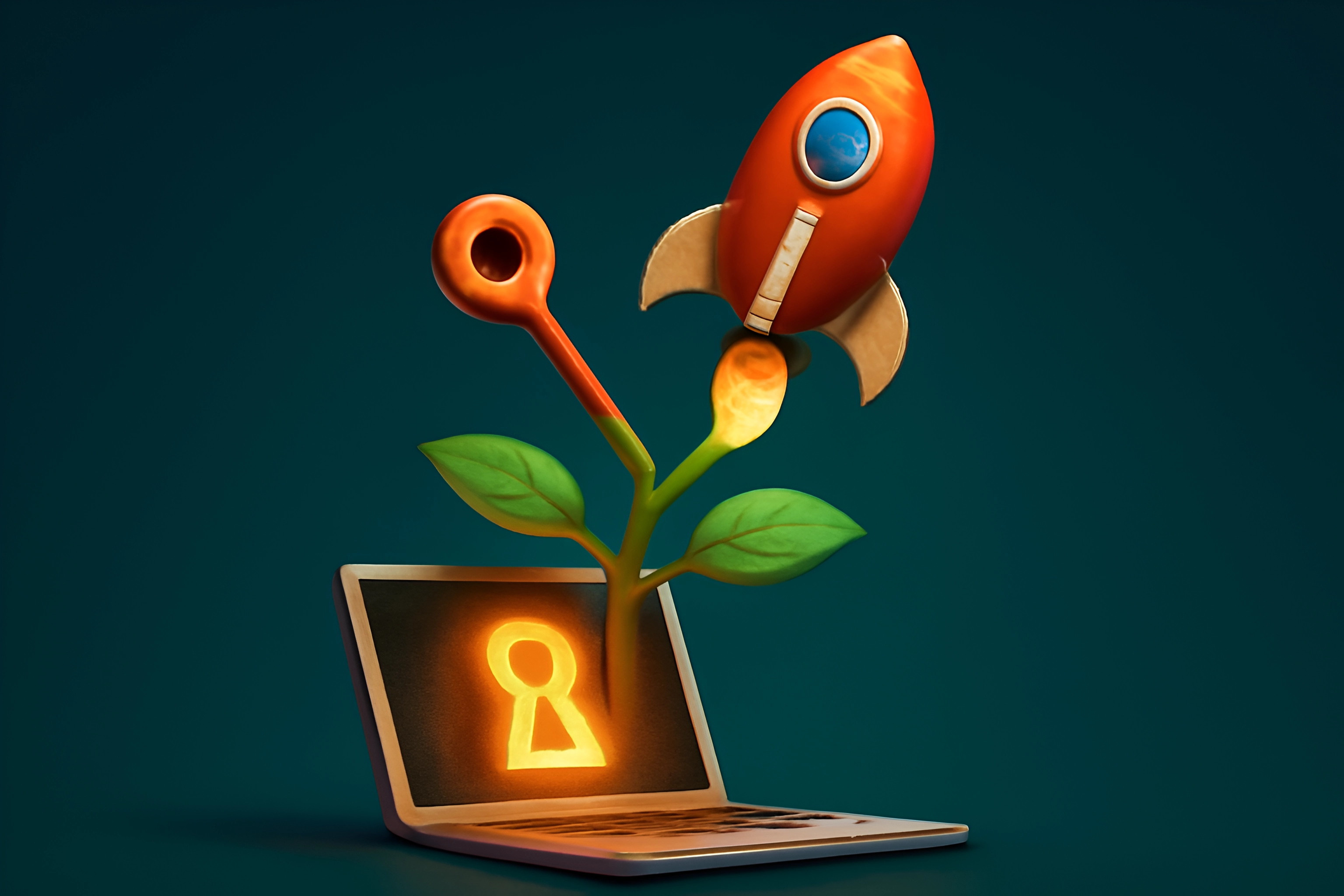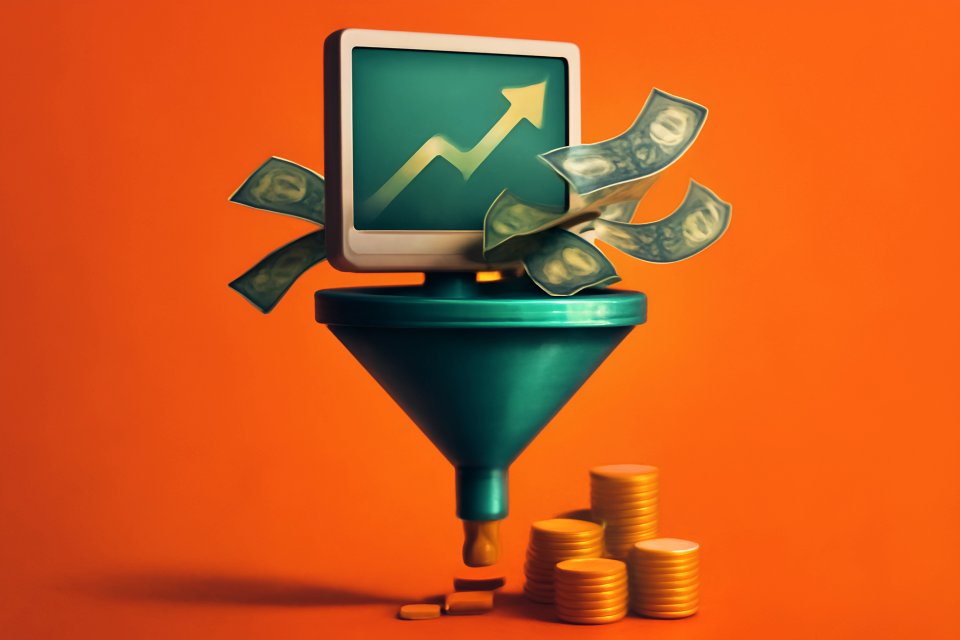
Your Step-by-Step Roadmap from Part-Time Passion to Full-Time Profit
It starts with a notification. A single, beautiful ping from your payment app that means more than just money. It’s validation. It’s the thrill of seeing your late-night project, your weekend passion, finally making real cash. But then, a daunting question creeps in, whispering in the quiet moments: "Could this actually be my full-time job?" That question is a cocktail of pure excitement and paralyzing fear, a crossroads where your ambition for freedom meets the cold reality of risk.
You’re not alone in this dilemma. Countless ambitious side hustlers hit an invisible ceiling, trapped between the security of a steady paycheck and the explosive potential of their growing venture. They possess the drive and the vision but lack a clear, safe roadmap to make the leap from part-time passion to full-time profit. They wonder if they have what it takes, if the timing is right, and what catastrophic mistakes they might be overlooking.
This article is your answer. Forget vague tips and motivational fluff; this is a strategic guide to scaling your side hustle into a full-time digital venture. We will walk you through three non-negotiable phases: validating your foundation with cold, hard data, building the operational bridge to full-time freedom, and finally, making the leap with the confidence of a seasoned CEO. Your journey to financial independence doesn't have to be a gamble—it can be a calculated, strategic masterpiece.
Phase 1: The Foundation – Validating Your Venture for Full-Time Viability
Before you even think about drafting that resignation letter, you must stop treating your side hustle like a hobby and start treating it like a business. This is the validation phase, where passion is stress-tested against profit and potential is measured with data. It’s about proving, to yourself and your bank account, that this venture has the legs to carry you into a new life of freedom and control.
Beyond Inconsistent Income: Proving Your Concept
That "good month" you just had feels amazing, but one good month is a fluke. A business is built on predictability. Your first mission is to move from celebrating inconsistent windfalls to engineering a reliable revenue stream.
Start by meticulously tracking your revenue and profit for at least three to six consecutive months. Is the trend flat, erratic, or, ideally, consistently growing? This data is your compass. It tells you what’s working and what isn’t, allowing you to double down on your most profitable offers and prune the rest.
This is also the time to get crystal clear on who your ideal customer is and where to find more of them. As you analyze your sales, you’ll begin to see patterns that transform your marketing from guesswork into a science. If you find your current idea isn't scalable, now is the time to pivot and find a niche side hustle with true full-time potential.
Calculate Your "Freedom Number": The Financial Reality Check
Passion doesn’t pay the bills, but a well-structured business does. Your "Freedom Number" is the single most important figure in this entire journey. It is the non-negotiable, absolute minimum monthly income your business must generate to cover your life, your business expenses, and your future, without you breaking a sweat.
Calculating it is brutally simple and profoundly clarifying. Forget complex financial models; start with this foundational formula. Use a spreadsheet and be ruthlessly honest with yourself about every single expense.
(Monthly Personal Expenses + Monthly Business Expenses + Taxes + Savings) = Your Freedom NumberThis number isn't meant to scare you; it's meant to empower you. It transforms your vague goal of "going full-time" into a tangible, measurable target. Once you know your Freedom Number, every business decision becomes clearer, guiding you toward the strategies needed to launch a profitable side hustle, even on a budget.
From Hobbyist to CEO: The Mindset Shift
The most critical transition you'll make happens between your ears. You must evolve from a freelancer or creator who gets paid for their time into a CEO who builds assets that generate value. This mindset shift, as exemplified by entrepreneurs like Iman Gadzhi who built a digital empire from scratch, is about taking radical ownership of your financial destiny.
This means you stop trading hours for dollars and start thinking about systems, leverage, and scale. It’s about working on your business, not just in it. To make this real, start time-blocking dedicated "CEO time" in your calendar each week—even if it’s just two hours on a Sunday morning.
During this time, you aren't fulfilling orders or answering client emails. You are analyzing your finances, planning your marketing strategy, and exploring ways to streamline your operations. This is the work that separates a side hustle from an empire and is a core principle in making the transition from freelance work to a sustainable online career.
Phase 2: The Bridge – Building the Systems for a Scalable Digital Business
Welcome to the bridge phase. This is where you do the unglamorous but essential work of building the operational backbone that will support your business long after you’ve left your day job. The goal is simple but powerful: create systems that save you time, generate leads, and deliver value without your constant, manual effort. This is how you prepare for digital business scaling and stop being the bottleneck in your own success.
Automate or Delegate: Your First Steps to Buying Back Time
You cannot scale if every single task depends on you. Your time is your most valuable asset, and right now, you’re probably wasting it on repetitive, low-value activities. The first step to building a full-time online venture is to aggressively identify and eliminate these tasks from your plate.
Start with automation. Implement simple digital tools to handle routine work: use Calendly for scheduling appointments, Buffer or Later for social media posting, and ConvertKit for email marketing. The goal is to let technology do the heavy lifting. For instance, Baystone Media successfully used a digital adoption platform to reduce inbound support calls by 10%, freeing up their team to focus on high-impact growth activities.
Next, consider delegation. You don't need to hire a full-time employee; start small. Hire a virtual assistant for just five hours a week to manage your inbox, conduct research, or handle data entry. This isn't an expense; it's an investment in your own focus and sanity, and a crucial step in learning how to integrate digital tools for seamless workflow automation.
Create Your Marketing Engine: Attracting Leads on Autopilot
Are you still relying on manual outreach and word-of-mouth to find new customers? That’s not a marketing strategy; it’s a recipe for burnout. A sustainable business needs an automated marketing engine that attracts, nurtures, and converts leads while you sleep.
The simplest and most effective version of this is a sales funnel. It starts with a valuable lead magnet—like a free checklist, guide, or webinar—that solves a specific problem for your ideal customer. You offer this in exchange for their email address, which then triggers an automated email nurture sequence that builds trust and positions your core offer as the ultimate solution.
This system turns cold traffic into warm leads and paying customers without you lifting a finger. Companies like Duolingo mastered this by creating an automated, gamified system that grew their user base to over 40 million daily active users. You can start building your own by learning the fundamentals of a step-by-step affiliate marketing funnel, a model that can be adapted to any digital business.
Standardize Your Workflow: From Client Onboarding to Project Delivery
Chaos is the enemy of scale. If you’re reinventing the wheel every time you land a new client or start a new project, you’re capping your own growth. The solution is to create Standard Operating Procedures (SOPs) for every process you perform more than once.
This doesn't have to be complicated. Use a simple Google Doc, Trello board, or Asana project to map out the exact steps for everything from onboarding a new client to delivering the final product and sending the invoice. An SOP ensures consistent quality, saves immense mental energy, and makes it incredibly easy to delegate tasks in the future.
Standardizing your workflow is the secret to professionalizing your operation and delivering a seamless customer experience every single time. It’s a core component of the efficient productivity systems needed to manage multiple income streams effectively, especially during the demanding period when you're balancing a day job with your growing venture.
Phase 3: The Leap – Your Pre-Launch Checklist for a Smooth Side Hustle Transition
You’ve proven your concept. You’ve built your systems. The dream is no longer a distant fantasy; it’s a tangible, achievable goal. Now it’s time to prepare for the final jump. This phase is all about meticulous planning and risk management to ensure your side hustle transition is less of a terrifying leap of faith and more of a confident, strategic step forward.
Build Your Financial Runway: How Much to Save Before You Quit
Your single greatest asset when you go full-time isn't your product or your marketing funnel—it's your cash cushion. A financial runway is the safety net that gives you the freedom to make smart, long-term decisions instead of desperate, short-term ones. It removes the pressure to take on bad clients or discount your services just to make rent.
Don't even consider quitting until you have saved a minimum of six to twelve months' worth of essential living expenses in a separate, untouchable bank account. This should be calculated after accounting for your business operating costs. This runway buys you peace of mind and gives you the breathing room to handle unexpected challenges or slow months without panicking.
This financial discipline is non-negotiable. It’s the ultimate act of self-respect for the CEO you are becoming. Having this security in place is what allows you to focus on strategic growth, knowing your basic needs are covered.
The Legal & Logistical Setup
It’s time to make it official. Operating as a formal business entity protects your personal assets, legitimizes your venture in the eyes of clients, and simplifies your finances. This is a critical step in moving from a casual side project to a serious, professional enterprise.
First, decide on a business structure. For many, starting as a Sole Proprietorship is simplest, but forming an LLC (Limited Liability Company) offers crucial liability protection that separates your personal assets from your business debts. Next, open a dedicated business bank account to keep your finances clean and make tax time infinitely easier.
Finally, choose a simple accounting software like FreshBooks or Wave to track income and expenses from day one. While these steps are straightforward, it's always wise to consult with a legal and financial professional to ensure you're making the right choices for your specific situation. This formalization is the bedrock of your new career.
Your First 90-Day Plan as a Full-Time Founder
Quitting your job without a clear plan is like setting sail without a map. The freedom of a wide-open schedule can quickly turn into unproductive chaos. Before you give your notice, you must create a detailed 90-day plan that outlines exactly what you will do in your first three months as a full-time founder.
This plan should be focused and realistic. Don't try to do everything at once. Instead, identify one or two key objectives that will have the biggest impact on your business's stability and growth. Examples could be "Land 3 new high-ticket retainer clients" or "Fully launch and optimize the email marketing funnel to generate 50 leads per week."
Having a clear plan with measurable goals provides structure, focus, and a way to track your progress. As highlighted in case studies on digital strategy, companies that use data and clear KPIs see tangible results, with some improving customer engagement by 30% and retention by 20%. Your 90-day plan is your personal roadmap to achieving that same level of strategic success from day one.
Conclusion: Your Journey to Financial Freedom Starts Now
You now hold the roadmap. The path from a promising side hustle to a thriving full-time digital venture is no longer a mystery. It’s a clear, three-phase process: first, you validate your foundation with data, not dreams. Second, you build the automated systems that create leverage and freedom. And third, you prepare for a strategic, well-planned leap into your future.
At TheEarnist, we believe that building the life you want isn't about luck or secret formulas. It's a learnable skill built on a foundation of smart strategy, consistent action, and meticulous planning. You have the ambition. You have the drive. Now, you have the plan.
The next step is yours to take. You have the power to turn your passion into your profession and build a life of financial independence and creative control.
In the comments below, tell us: Which phase are you in right now, and what's your single biggest goal for the next 90 days?
Ready to get serious about your transition? Download our free 'Side Hustle to Full-Time Transition Checklist' to track your progress and ensure you don't miss a single critical step on your journey.














